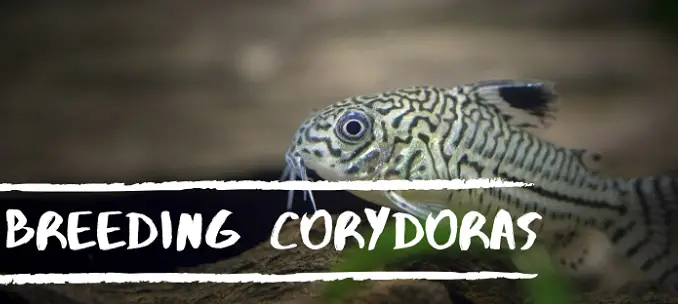
Corydoras are also known as cory catfish. They are freshwater fish that is extremely popular with aquarium enthusiasts all over the world. What is especially appealing about these fish is that they are very social and like to be kept in groups of 6-7 or more of their own species as well as other breeds of fish. These types of fish groups are called schools.
If you have a tank full of corydoras, count yourself very lucky! You will be able to introduce other similar temperamental fish to the aquarium without getting any trouble from your cory catfish. In fact, if you have tetras or other similar colored fish in the tank, the cory catfish will swim with them playfully.
Another benefit of having a school of cory catfish in your aquarium is that they will help keep your tank clean. Corydoras are bottom feeders. This means that they spend most of their lives at the bottom of the tank, looking for leftover food and other debris to nibble on. Bottom feeders, in general, are great tank companions for messy fish and make your life that much easier when it comes to cleaning the tank.
Read Related Article: Glow Fish Breeding
Corydoras is the scientific name for cory catfish. We will be referring to them by both names throughout this article, so don’t get confused. Most fish have a scientific name as well as a ‘street’ name, in this case, the scientific name and street name are just as commonly used.
TABLE OF CONTENTS
- Corydoras Fun Facts
- Where Are Corydoras Found in the Wild?
- What Makes Corydoras So Special?
- Corydoras And Egg Laying
- When Are Corydoras Old Enough to Mate?
- How Often Can You Breed Corydoras?
- Tank Conditions For Breeding Corydoras
- Identifying If Your Corydora Is Male Or Female
- Do Corydoras Change Gender?
- What To Do When Corydoras Lay Eggs
- How To Look After Corydora Fry
Corydoras Fun Facts
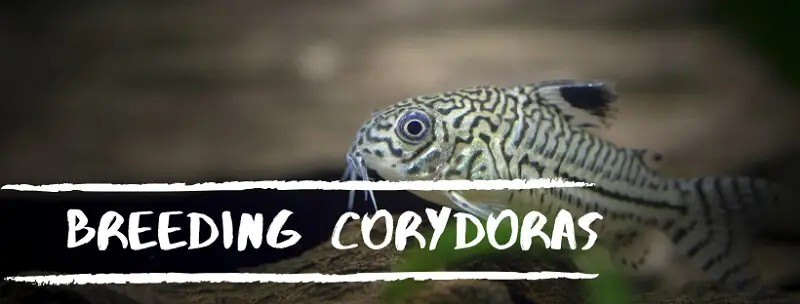
- Female corydoras are a little larger than males. They can grow up to 3 inches long, while the males reach roughly 2.5 inches.
- Adult cory catfish don’t have teeth. You may notice small teeth-like ridges on larvae and young cory catfish. They soon lose those baby teeth and are left as gummy adults.
- Cory catfish live for a maximum of 5 years. They will only reach this age if you keep them happy and healthy. Do not forget that the happiness of your fish is just as important as their health.
- Corydoras can’t get pregnant. They are egg-laying fish, so they do not give birth to live larvae.
- Corydoras aren’t fussy when it comes to their food, they will eat both plants and meat.
- They love to eat, but make sure their meal sinks to the bottom of the tank. Cory catfish are a little lazy and would rather their meal comes to them.
- There are 161 recognized species of corydoras.
- Corydoras like to eat zucchini and squash every now and then.
- Corydoras can breathe atmospheric oxygen through their posterior intestine and will often surface to take a breath of air.
Where Are Corydoras Found in the Wild?
You won’t find these fish in the sea, instead, they are in ponds, streams, rivers, and marshes. They prefer a slow-moving flow of water. Cory catfish are native to South America. The most important thing for corydoras is to be situated in shallow and murky water.
Corydoras were discovered between 1831-1836 by none other than Charles Darwin. Charles Darwin stumbled across these little fish on his 5-year famous voyage on the Beagle. Good job Charles!
What Makes Corydoras So Special?
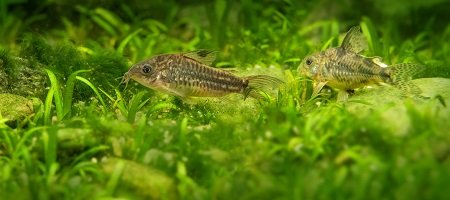
These fish are so popular because of their laid-back, easy-going nature. They don’t ask for too much and won’t cause a fuss among other fish species. Cory catfish even befriend other fish species.
As we mentioned earlier, they love to feed on other fish’s leftover food, from the substrate, assisting in keeping their environment clean. Bottom-dwelling fish are really important when you have a sand or gravel substrate in your tank. This is because they are constantly moving the substrate around, filtering the water as they go about their business.
Tanks that do not have a bottom-dwelling fish will need to be cleaned and looked after a little more frequently, especially if there is a sand substrate in the tank. Sand will discolor very quickly and dangerous gas pockets form in the sand if it isn’t looked after by a bottom dweller. Raking the sand with your hand now and then will help slow this process down.
Read Related Article: Axolotl Breeding
Corydoras And Egg Laying
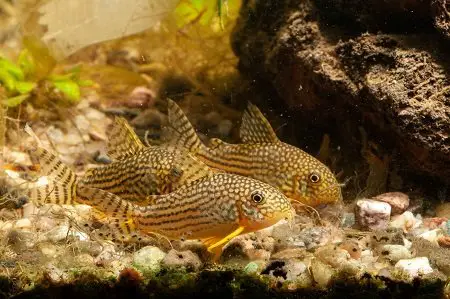
Corydoras, like many other spawning fish, have a tendency to eat their own eggs. Therefore, it is important to separate the cory catfish from the eggs as soon as the eggs have been laid and the spawning session is over. The most important part of looking after the eggs is actually ensuring the adult fish are out of the tank ASAP to prevent the corydoras from eating their fry.
Corydoras eat their own fish in the wild too. This is their way of controlling their population. We are unsure if corydoras eat eggs that they think are genetically impaired or if they just do it as a survival instinct.
The fry tank and the breeding tank can be the same. Although corydoras can spawn in their regular community tank, it is best to move them so that you don’t have to handle the eggs.
Make sure that the breeding/fry tank is fully cycled before prompting your fish to breed. This tank should be as simple as possible, no need for fancy accessories in your breeding tank as that just makes it that much harder to clean.
Corydoras eggs take just 3-5 days to hatch, hence the importance of having a breeding tank ready and cycled. If you are having trouble cycling your tank, use a good water conditioner and beneficial bacteria to speed up the process a little.
Cory catfish females will swim with their fertilized eggs to a flat surface for depositing. They like to place the eggs on something soft like moss.
When Are Corydoras Old Enough to Mate?
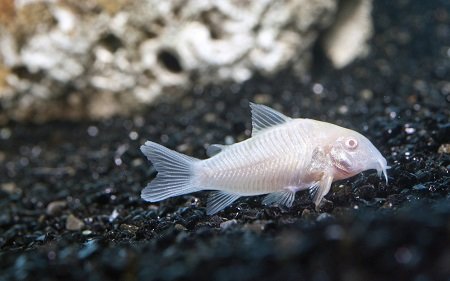
It is probably best to wait until your corydoras are 12 months old before breeding them. This ensures you do not waste your time attempting to breed fish that aren’t sexually mature yet.
The act of spawning can be extremely stressful for fish if they are not sexually mature. Another reason why breeding your fish prematurely is a bad idea. It is most likely that your male corydoras will be sexually mature between 6-9 months old, but try and refrain from breeding them this early on.
Make sure your corydoras are at least 2.5 inches long before breeding them, even if they are 12 months old. After all, fish mature at different rates, and size is the best indicator here.
If you are an inpatient breeder and want to get your corydoras population up as quickly as possible, you will be glad to know that they are extremely easy to breed. You may even get between 15-20 healthy fish from one spawning session. Brilliant!
Read Related Article: Breeding Corydoras
How Often Can You Breed Corydoras?
You can breed your corydoras whenever you like as long as you follow the following instructions for preparation.
- You obviously need to pick healthy fish. This may seem like a no-brainer, but sometimes the fish are not in the best condition for breeding. If you have had to medicate your fish for any reason I would suggest waiting a few more weeks before starting the breeding process to ensure healthy offspring.
- Next, you need to reassess where your breeding/fry tank is to be situated. If it is near a window you will need to bear in mind that natural light and outside temperatures will interfere with the breeding activities in the aquarium. Try and move the breeding tank to a quiet, dark area of the room so that you have control over the light. (13 hours of soft light per day is perfect)
- Place a little hiding spot in the tank. This can be something super simple like a large plant or a cave of some sort (broken coconut shells are great for corydoras).
- Ensure the tank conditions are optimal. The water PH level should be between 6 and 8, and the temperature between 75-78 degrees Fahrenheit. Ensure that you perform 50% daily water changes so that the water stays clean. The water should be pretreated before putting it in the tank with the fish to avoid ‘new tank syndrome’.
- Do not try and breed one corydoras couple at a time. As we mentioned earlier, they are extremely social and will not ‘get in the mood’ if there are just a couple of fish in the tank. Instead, have 3 or 4 females and the same amount of males together in the breeding tank and watch the magic happen.
You want to have a larger aquarium prepared, cycled, and ready for action when your new fry is ready to be populated should you find that your tank isn’t large enough for any more companions. You will have roughly 4 to 5 weeks from when the eggs are laid to when the fry are ready to be moved in with the rest of the family.
Please note that brand new tanks can take up to 8 weeks to cycle. It also isn’t a process that can be rushed. Most of the time, with the right tank conditioners, beneficial bacteria, and sufficient equipment it will be a little quicker. Nonetheless, prepare for the worst possible outcome and you won’t get any shocks or run into hurdles along the way.
For Your Information: New tank syndrome is when an aquarium has an immature or inadequate filter system. Beneficial bacteria are vital for the fish to ensure ammonia levels are kept low. Large water changes can remove the beneficial bacteria and cause the fish to get sick if the replacement water is too ‘fresh’.
Tank Conditions For Breeding Corydoras
Cory catfish need a tank that holds approximately 30 gallons of water, even though they are only little fish. Think of it this way, corydoras like to live in schools and can be kept with other fish species and plants. This requires a lot of tank space, thus having a tank big enough is key to keeping your fish in the best condition.
The tricky part about keeping a lot of little fish together in a tank is they like to swim around each other. Larger fish tend to be a little lazier than small fish, something that fishkeepers do not expect at first.
The tank may look big enough for your fish, but have a look at how they act in the tank. If they are constantly looking startled and as if they are trying to get away from one another, you should consider a bigger tank.
In the breeding tank you will need the following:
A Heater
Corydoras are especially sensitive to temperature changes in the water. Having a reliable heater will ensure your breeding fish are happy. Eventually, when the eggs are laid and the fry hatch, the water temperature will be even more important.
Filter
Canister filters are a good choice, you can also go for a sponge filter if you prefer.
Good Lighting
If you want to go all out and throw in a few live plants, LED lights are a must. Plus they do make the tank look much nicer. The lights will help you spot the eggs and fry if they are hiding in there.
Substrate
Think of the tank’s substrate as your lovely cozy blanket. It’s super important to you, right? That is how the corydoras feel about sand. Anything other than sand will damage the fish and cause them discomfort. That certainly won’t get them to breed successfully.
Plants
Don’t overdo it on the vegetation in your breeding tank. Having a few well-trimmed plants in the aquarium will make the fry feel safer in their first few days. Java moss, crypts, and pennywoods are good plants to have in your breeding tank.
Identifying If Your Corydora Is Male Or Female
You can not possibly tell the difference between male and female corydoras when the fish are sexually immature. Well, not unless you are a cory catfish expert, of course.
Wait until the cories are a year old, or 2.5 inches long, and observe them in the aquarium. You will notice that some look a little thicker and chunkier in general. These are females. In comparison, the males are super slim and look like younger fish.
Do Corydoras Change Gender?
Corydoras do not change sex. If they are born male they will stay male for the rest of their lives, and the same goes for females. Any supposed gender changes are purely due to mistaken identity.
What To Do When Corydoras Lay Eggs
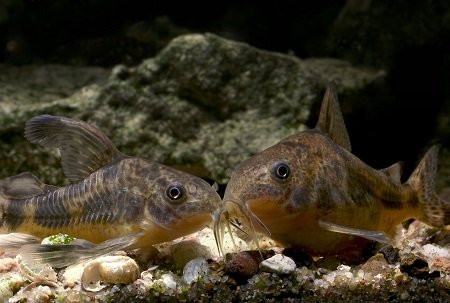
As soon as the corydoras have laid their eggs, take the adults out of the breeding tank and place them back into the population tank. You can either leave the eggs in the breeding tank and take care of them there or move the eggs into a fry tank.
Either method works brilliantly, however, less experienced cory catfish breeders should avoid handling the eggs altogether as they are very fragile. As long as the breeding tank is rather minimal and uncluttered, the fry will be very happy in the tank once the eggs hatch.
How To Look After Corydora Fry
Once your fry hatch, they won’t need to be fed for about 23-48 hours as they still feed off the remaining yolk sack in their stomachs. Once you notice the fry start to wriggle and giggle about more than usual, you will need to feed them twice per day.
Newborn fry will only require powder food in their first week of life. Once the fry has grown a little (after a week or so of dry food) you can introduce either live or dead protein. Baby brine shrimp are a delicacy for cory catfish. On their 3rd or 4th week of life, you should start to feed them frozen daphnia.
You may notice a fry or two are not quite as strong as the rest, or maybe they are slightly deformed. If you are breeding your fish for your pleasure then leaving weaker fish with genetic issues is fine. If you want strong fish that will be suitable to breed in the future then this weaker fry should be separated from the rest.
When your fry is large enough to move into the general population tank, make sure the tank is big enough to house all of the fish. If you do not have a large enough tank and do not wish to have a bigger tank, give some fish away.
So there you have it. Your complete breeding guide for the cory catfish. You can follow these tips for all the cory catfish species. We hope you have found this information helpful. Happy breeding!

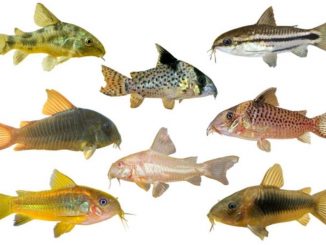
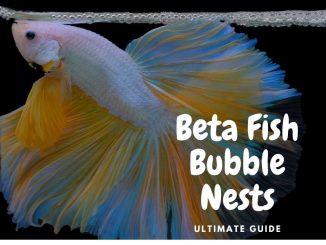
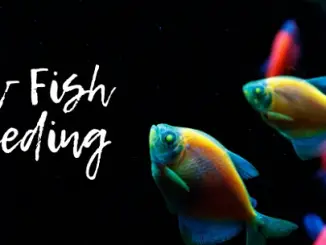
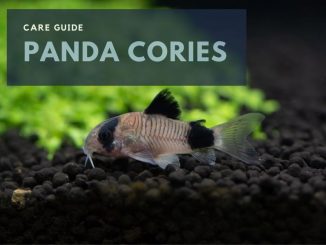
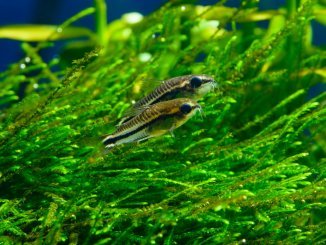
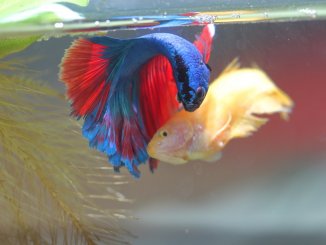
At what age do the Albino Corydoras stop breeding/reproducing?
I’ve breed my corys by accident! I’ve have a few that are about one year old and a few that are maybe 4 months. They all shared the tank with a large Gold fish that recently died(she was about 2 years old). Interesting that only when this fish died, did they lay eggs. Are these creatures so smart are is this just a coincidence? Maybe the could sense that their offspring could now survive. Months ago, when I purchased the youngest batch of Corys, one was eaten by this now deceased Gold fish. I’m intrigued by this whole egg thing. I just noticed the eggs, googled and here I am. Hope a few of the offspring survive. I’m too busy to start separating tanks…but I’ll think about it.
Two batches of eggs in 2 weeks by a SINGLE pair of cory that are still in with the offspring and everything is going great I wasn’t expecting any of this so I’m learning on what I WAS SUPPOSED TO DO not that I will do any of it cause lie they say if it ain’t broke no need to be trying to fix it that’s why I’M PROUD TO BE AN AQUATIC REBEL !
i also bred my corydoras by accident. easily more than 200 eggs. the eggs on the walls of my aquarium, appear to be nestled in fake plants throughout my 40 gallon tank, that has 7 neon tetras, 2 white skirt tetras,2 gloe fish danios, 2 amano shrimp, and the 3 corys. what should I see if any of the fry survived? to be honest, I could use some more corys in my tank. is there any hope that some may have survived? I have many hiding places in my tank for the shrimp. Many plants, a piece of wood with many crevices, a large cave/rock/covered with plants where the fry might hide, and crevices in the gravel floor. I have also been grinding up some of the flake food soa small fry could ingest it! any comments would be appreciated! especially pictures, so I know what to look for!
Don’t have gravel with corys,it cuts off their barbles. When you change to sand and see how big they grow it will make you very happy I promise!
Corydoras don’t have a labyrinth organ, they aren’t Anabantoids. They use their posterior intestine for surface respiration.
Also there aren’t 7 types of corydoras, there are 161 recognized species.
Hi Juniper, thank you for bringing this to our attention! We’ve updated the article with the correct information :)
– Robert
I have 2 male and one female pepper corys, plus a betta and a snail in a ten gallon with sand substrate. They have been spawning and leaving eggs for trek months now. I now have two offspring. How do I get them to stop spawning. I don’t have room for a larger tank.
Hi, was wondering where the max age of 5 years came from? As far as I know it completely normal to reach 10+ years. Case in point, my Peppered Cory adult and one remaining offspring, are 16 and 17 years old. And the older mom is getting busy with a newly added male. Way cool, hope for babies.
Hi, I have difficulties to raise fry. They die early, one after one. Is fry very sensitive for water change or is the new born artemia something not good to feed?